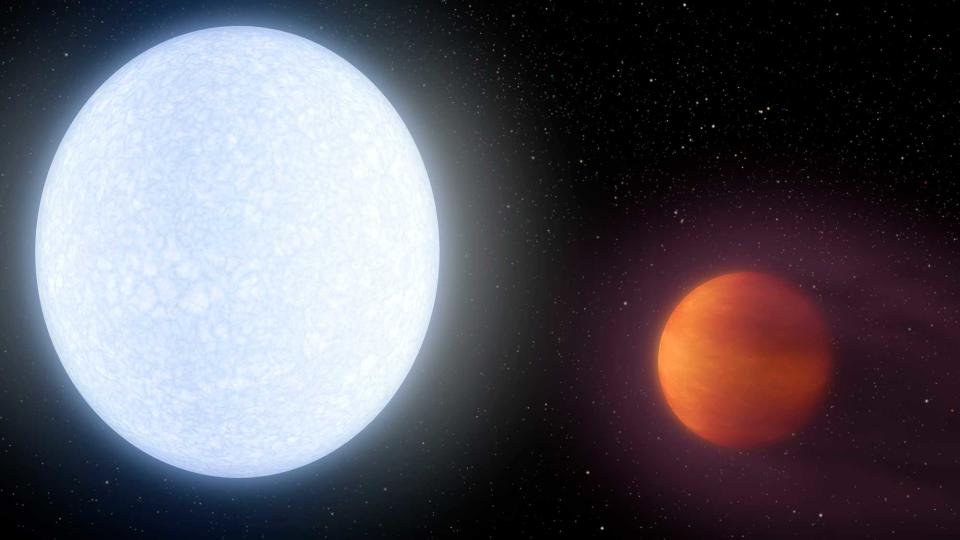Scientists discover hottest giant exoplanet ever observed

Scientists have discovered a distant Jupiter-sized planet that burns hotter than any they have ever seen, according to a new paper.
An international team of researchers report that the distant planet KELT-9b orbits an extremely hot star, making its temperature a scorching 7,820 degrees Fahrenheit. That is hot enough to break up molecules and strip away the planet's outer atmosphere, according to the paper. That is also about 2,000 degrees cooler than the sun.
The research could help scientists better understand these types of planets, which appear to be quite rare. There are thousands of known exoplanets, but only a few as hot as this.
The planet is one of six such known planets orbiting so-called A-type stars, which burn at roughly 9,000 to 17,000 degrees. No exoplanets have been found orbiting the even hotter B-type stars.
Previously, the hottest known exoplanet, WASP-33b, was recorded to have a temperature of 5,480 degrees.
The team, lead by astronomer B. Scott Gaudi of Ohio State University, published its findings Monday in the journal Nature.

 Yahoo Finance
Yahoo Finance 
